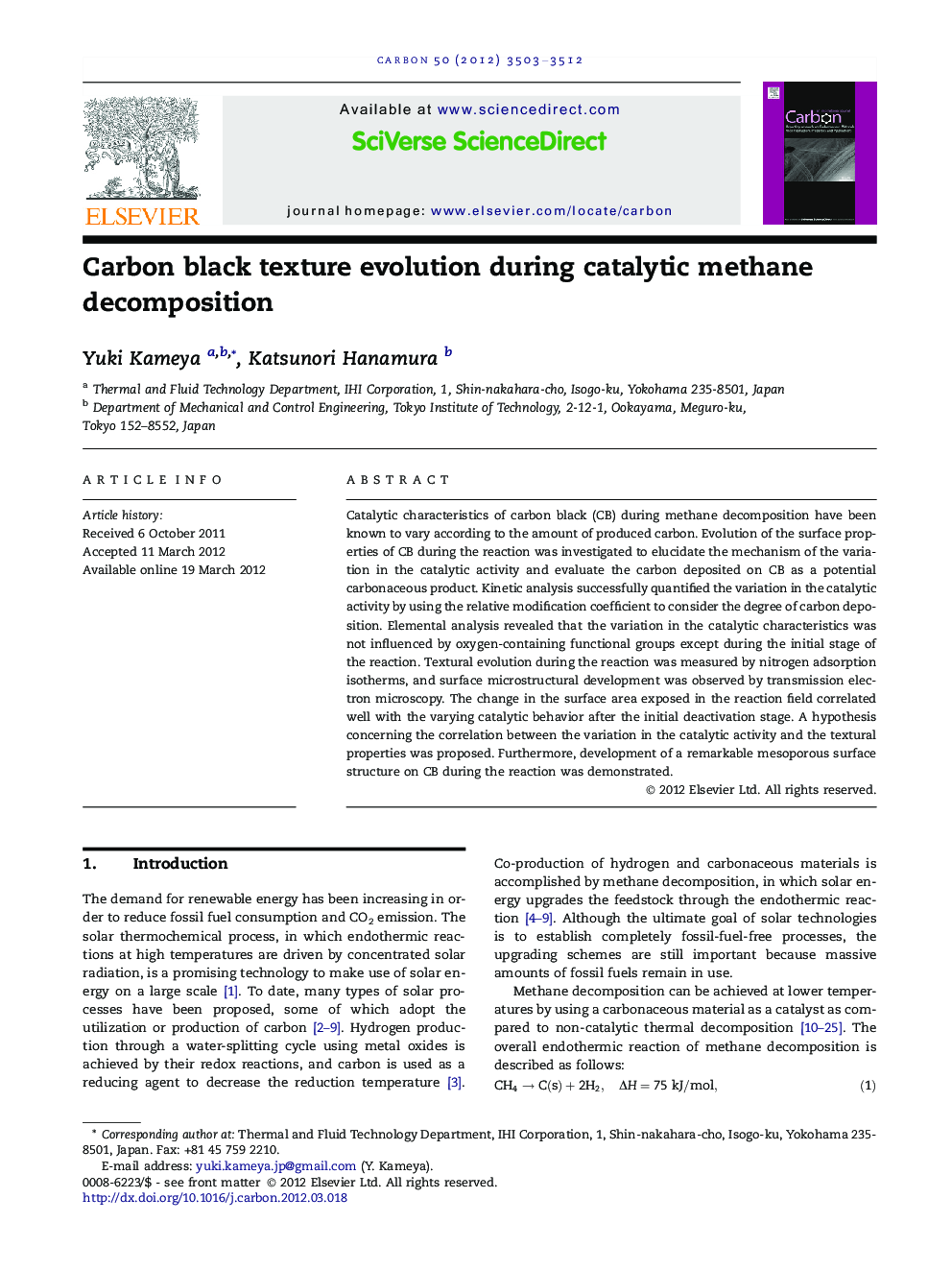| Article ID | Journal | Published Year | Pages | File Type |
|---|---|---|---|---|
| 1415225 | Carbon | 2012 | 10 Pages |
Catalytic characteristics of carbon black (CB) during methane decomposition have been known to vary according to the amount of produced carbon. Evolution of the surface properties of CB during the reaction was investigated to elucidate the mechanism of the variation in the catalytic activity and evaluate the carbon deposited on CB as a potential carbonaceous product. Kinetic analysis successfully quantified the variation in the catalytic activity by using the relative modification coefficient to consider the degree of carbon deposition. Elemental analysis revealed that the variation in the catalytic characteristics was not influenced by oxygen-containing functional groups except during the initial stage of the reaction. Textural evolution during the reaction was measured by nitrogen adsorption isotherms, and surface microstructural development was observed by transmission electron microscopy. The change in the surface area exposed in the reaction field correlated well with the varying catalytic behavior after the initial deactivation stage. A hypothesis concerning the correlation between the variation in the catalytic activity and the textural properties was proposed. Furthermore, development of a remarkable mesoporous surface structure on CB during the reaction was demonstrated.
